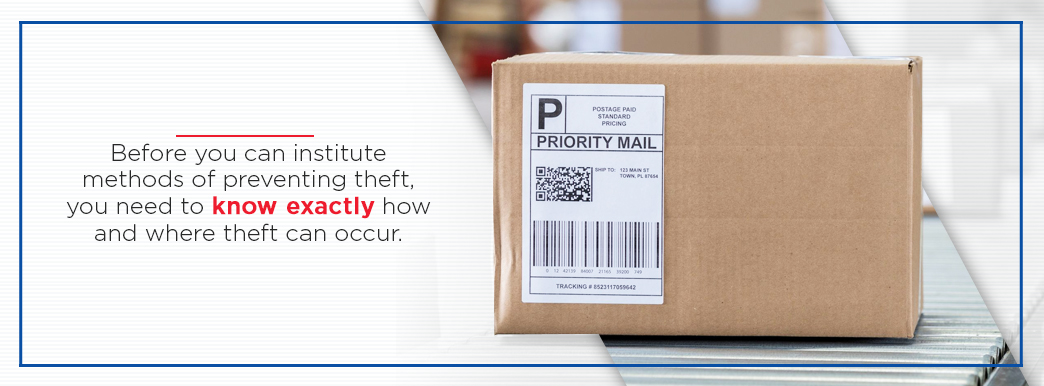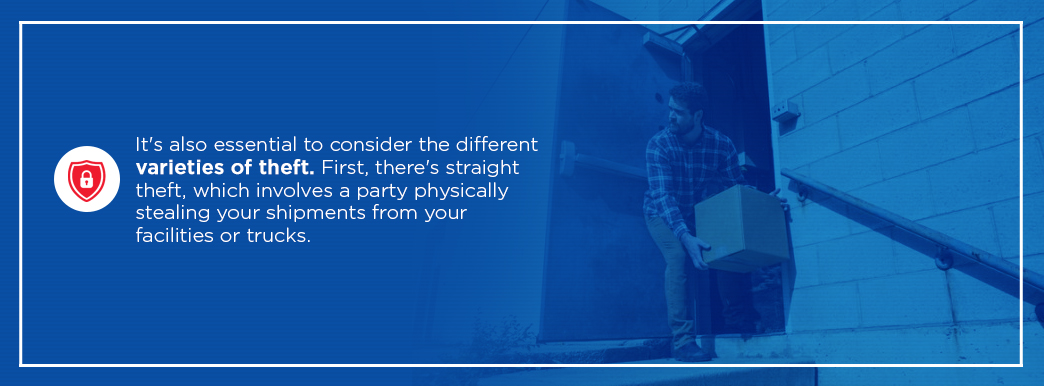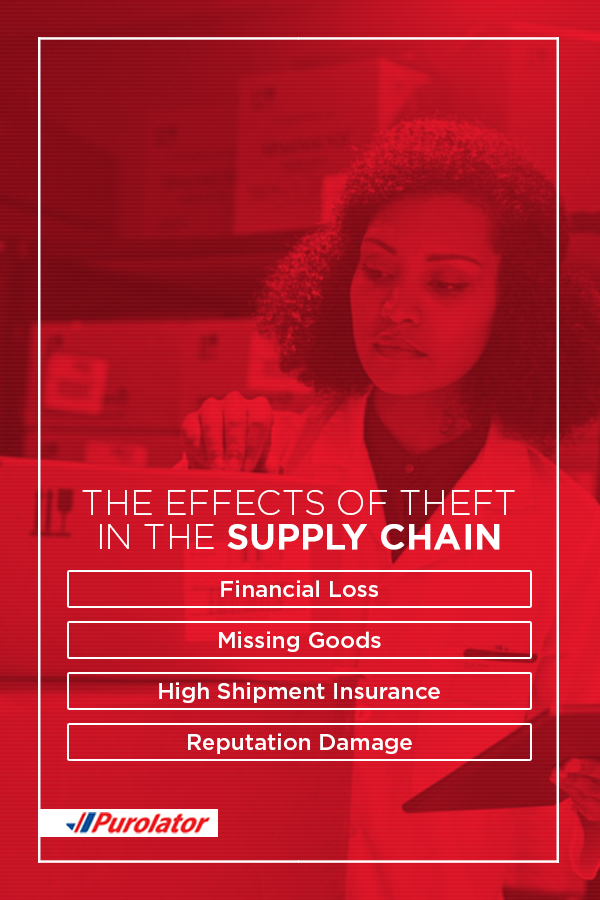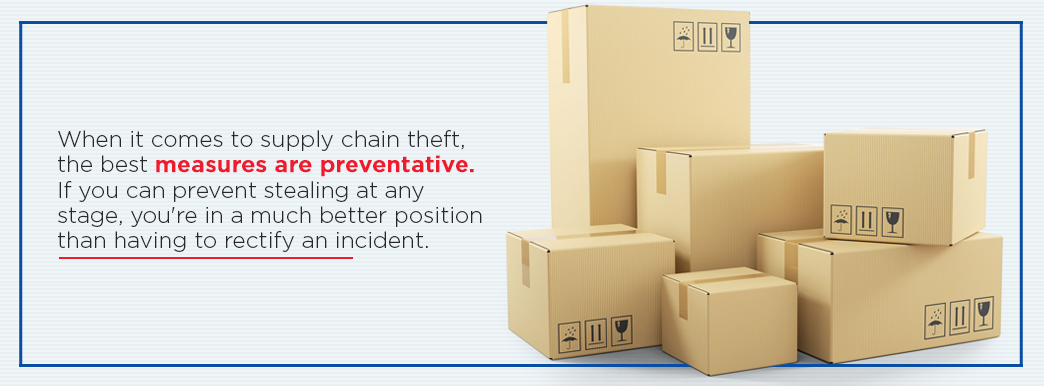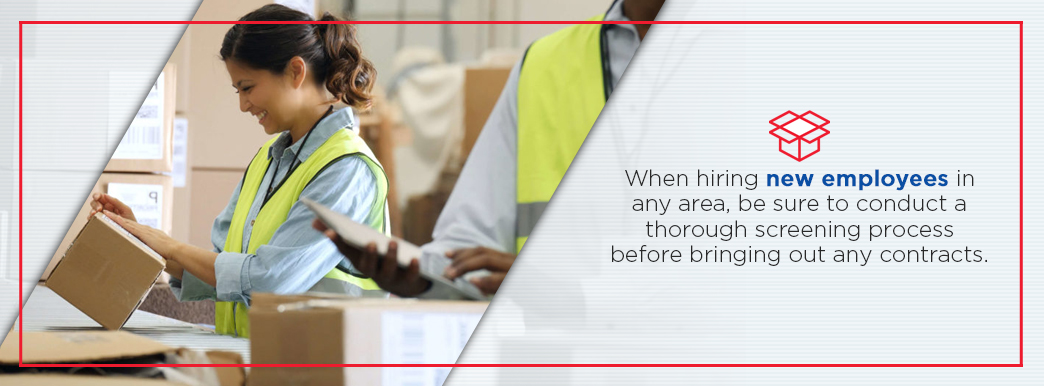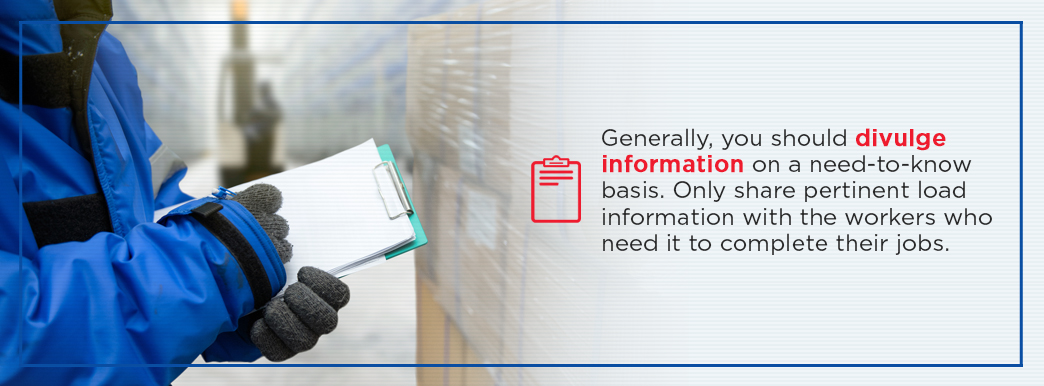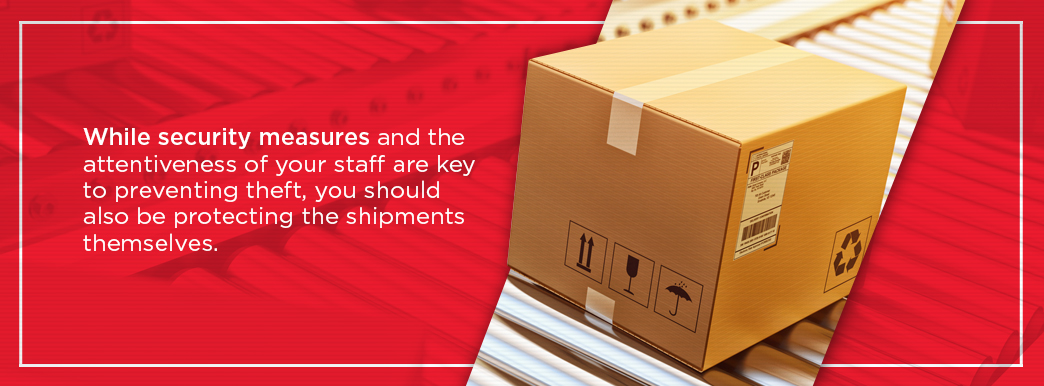Blog
How to Minimize the Threat of Theft of Your Shipments
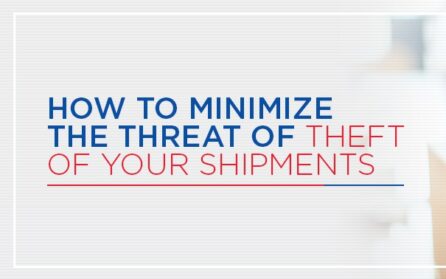
When it comes to the supply chain industry, there are many considerations that go into the day-to-day operations. From completing orders to loading vehicles to ensuring your shipments arrive safely, you have to make sure it all goes according to plan. The end goal is to get the products to your customers safely. But with the threat of shipment theft looming, it can be challenging to know if your facilities and products are safe for the entire length of the increasingly complex supply chain.
Many suppliers and businesses want to know how to prevent theft of shipments and which is the best way to safeguard their cargo. Thankfully, there are multiple methods you can use to detect threats early, mitigate shipping risks and provide optimal travel security. This guide will take you through the ins and outs of shipping theft and show you a few ways to minimize the threat.
What Is the Difference Between Theft, Pilferage and Shrinkage?
Before you can institute methods of preventing theft, you need to know exactly how and where theft can occur. There are several types of losses you may face during shipment or transportation, including:
- Shrinkage: Shrinkage occurs when you lose a part of your inventory due to outside factors, such as damage, spoiling, counting errors or misplacement in storage. It also includes theft, as it stands as an umbrella term for the amount of missing cargo, regardless of the direct reasoning for its occurrence.
- Pilferage: Pilferage is similar to theft, but on a smaller scale. It is used to refer to stealing within the chain of cargo custody. Usually, the loss amounts to a few items, boxes or crates that the thief skims off the top of the cargo.
- Theft: The biggest concern is theft. It has more negative consequences than pilferage and occurs on a larger scale. Theft is when employees, criminals, truck drivers or any other stakeholders steal a complete shipment. The quantity can amount to a full pallet, container or truckload of inventory. Theft will set you back the most in terms of expenses, material losses and needed recovery time. It can also affect the trust you have in your supply chain personnel if an insider committed the act.
Types of Theft
It’s also essential to consider the different varieties of theft. First, there’s straight theft, which involves a party physically stealing your shipments from your facilities or trucks. They may be able to gain access through an unguarded entryway or quickly unload some of your truckers’ cargo at a rest stop or in a parking lot. Experienced criminals and those knowledgeable about shipping may look for specific products as well, based on the internal temperature of the trucks or knowledge of schedules.
You may also have to contend with strategic cargo theft, which is much more methodical and premeditated. In these cases, thieves will use deceptive measures to gain access to your products. They may use tactics to take advantage of your staff, such as identity theft, posing as carriers or organizing fake pickups. Strategic thieves will look for the right timing, waiting for shipments on tight deadlines or rushed delivery, as there’s a higher chance of a slip up on your staff’s part.
For those who are more advanced and tech-savvy, cyber-attacks are a valuable strategy for accomplishing a cargo theft. Even basic forms, like phishing emails and malware, can grant scammers access to private data. Through such means, they can find information about orders, shipments, deliveries and pickups. They may also be able to access saved templates to create fraudulent paperwork.
While there are many different access points for thieves, there are ways to cover them all and minimize your chances of experiencing shipment theft. Implementing supply chain theft solutions does more than help you detect potential threats — it can also deter criminals from even attempting to steal from your facilities. The more you know about the mindset of the thieves and how they could steal your cargo, the better you’ll be able to detect early warning signs.
The Effects of Theft in the Supply Chain
Theft in any volume can significantly affect your business. Besides the apparent loss of material, there are several other negative effects of the rising rates in shipment pilferage and theft. These include:
Financial Loss
When an individual or group steals your products, it can affect you financially in more ways than one. In addition to the material loss, there are also expenses related to replacing the missing inventory. If a large number of items are stolen, the cost of starting over can make a significant impact on your business — not to mention the amount of time it takes to get back on track with orders.
You may also have to upgrade your supply chain facilities. Depending on whether or not the thieves damaged anything in order to access your products, you may need to purchase new warehouse doors, trailers or vehicle parts. If you suspect the thief entered with a key, you may need to have the locks changed. All together, this can add up to an expensive bill. The costs also translate into a rise in wholesale pricing, meaning they affect your customers as well.
You also have to consider personnel compensation. In some cases, you may need to reimburse transporters, drivers or other members of your workforce throughout the supply chain. It’s best for your working relationship to offer compensation for any damages that impacted their properties or businesses as well.
Missing Goods
When part of your inventory is stolen, there’s the apparent negative of losing part of your stock — in some cases, a significant portion. But missing goods can result in more than just a temporary rut. It can also cause missed opportunities to make a profit.
Depending on the number of items stolen, it can take your manufacturing team a long time to recover and restock the lost inventory. Restocking is essential to fulfilling the orders delayed by the theft, as well as keeping up with immediate demand, but it can set you behind. Playing catch up, while necessary, can result in missed opportunities with potential clients or buyers, affecting your business’ profits and competitive standing with other companies.
High Shipment Insurance
Once your business experiences a theft, on a small or large scale, you may experience a hike in shipment insurance costs. The expenses involved with keeping your facilities and vehicles insured once a break-in occurs are higher, and your rates will continue to rise with multiple incidents. The price will be even higher if you’re insuring what companies refer to as high-risk cargo. High-risk cargo includes items like electronics, fragile equipment, pharmaceuticals and vehicle parts.
It can also rise if your drivers take high-risk routes where theft has occurred previously. Due to an increased possibility of theft on these transportation or delivery routes, it is more important to have the insurance and more costly to purchase it.
Reputation Damage
Beyond money and material, your company may also take a hit with the public. If it’s common knowledge that you’ve experienced several instances of theft, customers and potential clients may be weary, as theft can also have an impact on their end. If they need a shipment on time, they may not turn to you, considering your past record. Additionally, it may raise safety concerns. Recurring incidents may signify to others that you need to improve your security measures.
Moreover, customers may see your stolen items on the black market. If you see a brand new, in-the-box item online selling at half the price it would sell for at a retail store, there’s a good chance it was stolen. Thieves aim to make money from their pilferage, and they’re likely to try selling the items they’ve taken, either through an online site or by approaching potential buyers. Low-price online listings can lower the perceived value of your products and damage your relationship with distributors and retailers.
Five Ways to Prevent Theft in the Supply Chain
When it comes to supply chain theft, the best measures are preventative. If you can prevent stealing at any stage, you’re in a much better position than having to rectify an incident. If you’re able to thwart the efforts of criminals each time, you’re sending a message to any potential future thieves. Additionally, customers and businesses who need reliable deliveries are more likely to trust a company with tight security measures when it comes to shipping.
With total cargo theft ranging from $10 billion to $30 billion per year in loss estimates, it’s essential to practice prevention. Thankfully, there are several ways you can improve upon your current supply chain security and figure out how to prevent cargo theft.
1. Know Your Personnel and Supply Chain
In order to trust your employees, you need to know them well. If you don’t familiarize yourself with each of your staff members and get to know their backgrounds before hiring, you’re leaving the potential for thieves to gain inside access open. Also, if you know your staff, you can identify risks and potential suspects quickly in the case of a theft.
When hiring new employees in any area, be sure to conduct a thorough screening process before bringing out any contracts. Experts in the cargo security field say most supply chain thefts are the result of insider intelligence or are planned or allowed by personnel. Check their backgrounds for any suspicious activity or criminal charges. Have them list references on their applications, and be sure to contact them. You’ll want to make sure they haven’t been involved in theft before and legitimately want to work for your company.
Once you’ve hired a new employee, help train them, and get them acquainted with the workflow. Providing proper training will help you build a trusting relationship and let them know you are paying attention to your facilities and staff. You can also teach them to become advocates for inventory safety and to report if and when they see any suspicious behavior. The more employees you have on your team, the better you can monitor for potential theft.
While it’s essential to know your immediate staff, you should also pay close attention to your supply chain members. With every scheduled pickup, you should know the names and faces of the carriers and drivers. When they arrive at your facility, be sure to verify their IDs and make sure they match who you had listed on your schedule.
2. Report Anything Suspicious
Early detection is the best-case scenario if you suspect any potential for theft. Even if most of your suspicions turn out to be nothing, the one time you do catch a threat is worth the attentiveness. Any concern is valid when you’re considering the safety of your cargo.
One of the best ways to watch out for security risks is by consistently monitoring in and around your facilities. Pay attention to vehicles and individuals outside your building, and if you don’t recognize them or they’re not on your schedule, report them to your security team or look into the situation. Unauthorized individuals could be a threat to your cargo.
For more comprehensive monitoring, set up security cameras around the perimeters of your facility and hire personnel to create ID verification checkpoints. If you have vulnerable access points to your inventory, be sure to set up security for the doors, whether it be a swipe card system or posted guards. Regardless of what you choose, make sure you have systems in place for 24-hour monitoring.
Even outside your facilities, there could be security threats lurking. Your drivers should remain aware of their surroundings at all times. Thieves may attempt a scam even on roadways, where trucks aren’t under the watchful protection of your company. If a driver suspects they’re being followed by a vehicle, you should train them to report the incident and advise them not to stop or get out of their vehicle. Cargo thieves attempt hijackings in teams, and if there is a threat, your driver could be outnumbered, putting his or her safety at risk.
It’s also important to have your staff look out for any suspicious activity. With many pairs of eyes on your doors and facilities, you’ll have a better chance of catching any suspicious activity. But, you have to create an open line of communication where your employees feel safe reporting what they see. You may want to create an anonymous tip line where they can call in and give their account. The more trust you put in your staff, the more secure your facility will be.
3. Manage Information
When information spreads farther than it needs to, it can end up in the hands of those who may use it in the wrong way. Disgruntled employees or opportunists could use it to the disadvantage of your company, either by assisting a thief or stealing products themselves. It’s essential to protect your sensitive information, and putting a management system in place can help you keep your cargo safe.
Generally, you should divulge information on a need-to-know basis. Only share pertinent load information with the workers who need it to complete their jobs. They should keep the information to themselves as well. If they share it, it can be difficult to track down where there was a breach if an incident of theft occurs.
As far as warehouse workers and other employees go, there’s no need for them to know information about shipments, cargo or customers. Keep the client files secured in a space with limited access. The more you control your sensitive information, the easier it will be to keep your cargo safe and identify any culprits.
4. Involve Employees
Your employees are one of your most valuable assets. It’s best to maintain a trusting relationship and an open line of communication with them. If they know they can come to you or your managers with any issues, they’ll be more willing to divulge information or report suspicious activity. Your staff will serve as your eyes and ears while you aren’t around, so creating a good relationship between your workers and management is crucial to the safety of your facility and cargo.
Education is also essential to catching early signs of potential theft. Provide your staff — especially those that deal directly with shipments and customers — with training about cargo theft. Teach them about potential threats, what signs to look for, how to recognize a scam and what security measures they can take to ensure the products arrive at their intended destinations safely.
Ultimately, you want your staff to feel prepared and valuable. If you leave all security measures to the management, it can make workers feel less trusted, and you’ll be overlooking a potentially valuable source of information and protection. By providing your staff with the knowledge and proper resources — such as an anonymous tip line — to recognize and report issues, you’re involving your entire team in the effort to prevent theft.
5. Protect Shipments
While security measures and the attentiveness of your staff are key to preventing theft, you should also be protecting the shipments themselves. There’s always room for human error — mistakes happen, and confusion can cause accidents. While most measures are preventative, shipment security is preemptive and can help you regain lost product in the event of a theft.
One way you can protect shipments is by monitoring them throughout their travels. Vehicle technology continues to improve over time, and taking advantage of the best and latest developments could mean less strife for your company. Installing GPS tracking devices and surveillance systems in your vehicles will allow you to monitor the location and status of your cargo throughout its travels. You’ll know if something is up as soon as your driver goes off course, stops unexpectedly or arrives at the wrong destination.
Along with tracking the vehicle itself, you can also track the journeys of independent packages and ensure they reach their destinations on time and safely. By keeping an eye on single items, boxes or pallets, you can monitor their locations from the time they leave your facilities to their arrival. You’ll also have a much better chance of recovering all of your stolen products in the event of a theft. Truck and package tracking are also excellent ways to prevent international shipping theft.
Beyond tracking, you can also include surveillance equipment on your rigs. Through modern technology, you can receive alerts of any shipment tampering or suspicious behavior. Mounted cameras can help record any incidents or identify thieves. If your shipping personnel have access to cameras around the outsides of their truck, they can easily spot if any cars are following them or if thieves are attempting to get into their cargo.
There are plenty of technological resources available to make protecting your shipments easier and more comprehensive. Through GPS systems, tracking methods and consistent surveillance, your team will be able to prevent theft and, if necessary, regain any cargo that may have been stolen.
How Does Guarding Against Theft Change When Crossing an International Border?
Cargo theft is a prevalent issue throughout North America, and each country has a different approach to these incidents. While cargo thefts have declined since 2015 in the U.S, they have increased during the same time frame in Canada. In 2018, there were a total of 591 total thefts in the U.S., while Canada experienced 621. In the U.S., specialized cargo task forces respond to these incidents. In Canada, only the Peel and York Regions have cargo-related crime units. Therefore, differences in the national crime landscapes can correspond to a need for increased security when crossing a border.
Increase Your Supply Chain Confidence With Purolator International
With Purolator International, you can protect your shipments from theft, monitor the location of your cargo and ensure your products reach their destinations safely throughout the U.S. and Canada. Our solutions allow you to process and keep a close eye on your shipments, even when you have multiple in transit at the same time. With our comprehensive services, you’ll also be able to carry out administrative tasks, simplify your electronic billing and more.
We want to help you simplify your structure and provide better security for your cargo, and our professional IT team will make sure you get the best solution for your business. When you partner with Purolator International, you get over 20 years of cross border shipping experience on your team.
Minimize your threat risks with Purolator International — contact us for more information about our supply chain services.
